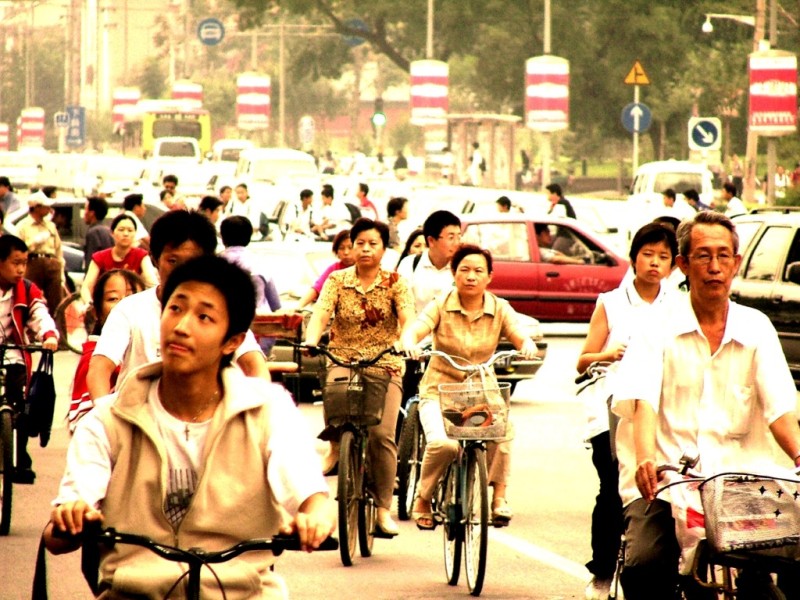One Child Policy in China
The Effects of the One-Child Policy on the Chinese Pension Plan
by Erman Erzurumluoğlu
Introduction:
China has been experiencing falling fertility and rising life expectancy for several decades now. These demographic indicators reveal that China is becoming an increasingly aging society. The potential social effects of a population slowdown in a developing country as is China should not be ignored. The main factor behind the dramatic drop of the fertility rates was the “One-Child Policy” (OCP), which was implemented at the national level in 1979. The policy aimed to slow down the country’s uncontrollable population growth which created a risk of a Malthusian Collapse and implement a smaller family culture for a society that had a fertility rate of 6 child per women only 10 years prior. As an effect of this policy, fertility rate had dropped and the population growth slowed down significantly. There will surely be social consequences of this transition; in this paper I will address the effects of the decreasing working age population on the pension plans of the elderly section of the society. Furthermore, I will analyze the recent changes on the OCP and evaluate their effectiveness as a solution to the problems caused by demographic engineering.
Background:
The current political state of China was formed on October 1, 1949 when the Communist Party Chairman Mao Zedong proclaimed the establishment of People’s Republic of China (PRC). In its first two decades, PRC realized a rapid population growth of above 2% per year. At that point historically China had a very high fertility rate, in the 1953 census it was indicated that the fertility rate was 5.8 children per women. The main factor that was fueling this growth was the dramatically decreasing mortality rates. During the period between the censuses of 1953 and 1964 the population increased by 100 million (Peng, 2011). Mao believed that more people meant additional numbers for the fight against capitalism and a stronger socialist state.
Initial Family Planning Program:
However, by 1971 it was realized that the current population boom would eventually overpopulate the country and cause a “Malthusian Collapse”, meaning
“Unchecked population growth that eventually outstrips growth in the food supply and results in massive famine” (Ng, 2015). In response to this they launched the wan xi shao family planning program that promotes later marriages, longer birth intervals and fewer children (Zhang and Goza, 2006). The name of the program literally translates for “late, sparse, and few”. In the course of the program the government promoted the idea of “fewer but higher quality births”, which became an important cultural value in the minds of many (Zhang and Goza, 2006). The government also started to educate its people on how to use methods of birth limitation, the birth rates in the rural areas particularly dropped due to the availability of contraception. It could be said that the majority of the fertility drop needed to sustain the population happened before 1979 OCP. In 1979 the fertility had decreased from 1970’s 5.8 to 2.8 births per women (Peng, 2011).
The One-Child Policy:
In 1979, two thirds of the Chinese population was under the age of 30. In addition to this the baby boomers of the rapid population growth of 50s and 60s were entering their reproductive years. At the time China harbored the quarter of the world’s population while only occupying 7 percent of the land. These factors combined with market reform program launched during that year inclined the government to apply strict population control rules in the form of OCP (Hesketh, Lu, and Xing, 2005).
In the implementation of the policy, the government relied heavily on financial and other incentives and incentives. For example, the couples who had only a single child, were given more vacation days. Another important factor that helped the government enforce the policy was the universal access to contraception and abortion (See Figure 2). While 87 percent of all married women use contraception, intrauterine devices and sterilizations together accounted for 90 percent of contraceptive methods (Hesketh, Lu, and Xing, 2005).
Technically, China does not implement a pure OCP, generally strict OCP has been carried out in urban regions. Majority of rural citizens are allowed to have a second child. However, the regulations on that may differ depending on the province. Usually rural families are permitted to have a second child if the first-born is a female, which indicates the strong preference for males in Chinese society. Over the years of OCP implementation the male/female ratio increased to alarming levels. This social consequence will be discussed in more detail in the last section of the paper. Minorities in society are subject to less strict rules than the Chinese. They may even have the third child if they live in under populated regions.
When OCP was introduced, the government set a target population for the year 2000, which was 1.2 billion. The census in 2000 indicated that the population of the country was 1.265 billion (Peng, 2011), but there is a possibility that this number is an understatement since government officials enforcing the OCP are often unwilling to uncover any violations of the rules.
In 2010 the total fertility rate of PRC was around 1.63 (See Figure 3 for the fertility trend), however the fertility rate in big cities were usually much lower than the average somewhat due to the stricter implementation of the OCP. For example Beijing having a fertility rate of 1 and Shanghai 0.9. Another reason why the big cities had such low fertility rates was the expensiveness of child raising in China. This will be discussed further in the later parts of the paper. Overall when we add the average life expectancy of 73.7, the demographic picture of China is the exact opposite of what it was 50 years ago.
Initial Chinese Pension Plans:
China’s first pension system was introduced 1951 under the National Labor Insurance Regulation, shortly after the installment of the new government. The replacement rate for this initial program was 50 to 70% of an employee’s salary. Also, in order to fund the distribution of the pension, enterprises hat to pay 3% of their total salary bills. While 70% directly went to the retirees, 30% was used to fund a national master pool. However, during the Cultural Revolution, with the disbandment of Ministry of Labor, which was responsible for the pension, scheme the pool was terminated (CAI and Cheng, 2014).
After this, China used a Pay-as-you-go system financed by State-Owned Enterprises (SOE) revenues until late 1980’s. It was a cradle-to-grave security system and was closely connected to China central-planned economy. The system included communist features like public ownership, life-long employment, restricted labor mobility and non-existent unemployment. During that time changing employment meant, change of pension pools, thus losing all accumulated pension money. This kind of rigidness was a major obstacle for China’s plan to implement a labor market reform. Since any layoff from an enterprise would be countered with a lot of resistance form the workers.
Most Recent Plan:
In 1997, a three-part pension system was introduced, which allowed SOE’s to be uninvolved with pension and welfare payments to retired people. This is a way dissolved the rigidness of the old system. The first part of the plan was called the basic pension plan, which indicated that retirees would receive a benefit in the future financed by a Pay-as-You-Go system. Enterprises were required to give 22% of total employee wages to the Basic Pension Fund administrated by local authorities. In order to be eligible for the plan an employee needed to contribute to the fund for minimum of 15 years. This part of the plan formed the backbone of the retirement benefits of low-income earners. It is also essential to income equality since it distributes income across generations from younger workers to older people who usually have less income since they are not under paid employment. The second part was a defined-contribution system that involved mandatory contributions of 11% of workers’ salaries to individual accounts managed again by local authorities. 3% of the contribution came from the enterprises while individuals contributed 8 %(Cai and Cheng, 2014). This part of the plan by linking earnings to retirement income allows higher earning workers secure higher pension benefits. This part is becoming more and more important due to rapid rise in earnings in China. Third part consisted of voluntary pensions such as enterprise annuity and individual retirement plans.
An initial observer of the plan would praise it for looking after both the high and low earners of the society. However, the pension systems in China are based on formal employment and mainly provide pensions for retirees in urban areas. Urban residents who are not employed (or who are employed but not in a full-time job) and most farmers, including immigrant workers who move from rural areas to urban areas, are still excluded from the old-age insurance systems (Johansson and Cheng, 2014). In 2010, the Urban Basic Pension Plan covered 257 million urban residents, which makes around 40% of all urban residents. Other than this, 15% of all population living in the countryside, around 100 million people joined rural social pension system (Peng 2011). So, a vast majority of the rural population was not taken care of under the umbrella of the plan. This makes the success of the plan questionable since it is the people in the rural regions who earn the lowest income and usually live in multi-generational homes, thus need the most assistance from the state. In rural areas, only local government employees like state teachers and employees for state farms are eligible for basic pension. For other citizens state usually promotes the voluntary savings plans.
Associated Problems:
In addition these systems had a major sustainability issue, there are arguments that without any reform huge deficits in China’s pension system are expected. It is indicated that with a replacement rate of 52%, an annual deficit in the urban basic pension system will emerge as early as 2015. Considering that this is happening in a demographic golden age for China, the deficit problem is only expected to get worse as the population gets older and less people enter the work force than retirees. The decrease in the number of available workers associated with old age pensions and increasing health care costs for the growing aging population will put a severe strain on country’s growing national output. Due to the effects of the OCP, UN world population prospects project that; there will be an increase in the population of young adults until 2020, a decrease in the child population after 1990 and a continuous increase in the elder population after the implementation of the policy in 1979 (See Figure 1). This demographic transition also indicates that the elderly population will eventually surpass the working age population by 2025. This means it will be even harder in the future to universally cover all of China’s elderly with the current system since less workers mean less money fund a way larger elderly population. Assumptions state a total deficit equivalent to 95% of the annual GDP in 2050. According to these estimates, the future working force will be unable to funds the pension plans that are needed to provide for the current working for in the future (Luo, 2015).
Family Care:
Culturally, filial piety is of great importance in China. So due to insufficiency of the pension plans many retirees especially in the rural regions depend on their families to take care of them and live in multigenerational homes (Figure 5). Generally it’s the oldest son’s responsibility to take care of the elderly parents, which caused the families to have a strong preference of having a boy as their only child. This increased to male to female birth ratio to an alarming level of 1.18 (Peng 2011). However, one of the results of the OCP is the erosion of family capabilities and functions. Now that parents can only have a single child, all the responsibility of taking care of the 2 parents and possibly 4 grand parents will be on the shoulders of a single person. In this case it is harder to provide for up to 6 people then sharing the weight with a sibling or two. This also poses a significant threat on the countries traditions and filial piety culture.
Recent Changes on OCP:
Strict OCP’s future social effects are evident combined with slowdown of future economic growth the government was forced to ease some of the restrictions of the policy. In 2013, they allowed married couples to have two off springs, if one of the parents is an only child. Despite the rule change the take up was not very enthusiastic largely due to the change of priorities of a Chinese citizen had changed over the course of family planning decades. One must take in to consideration that China now has a much more educated society than it had before the family planning policies. As it could be observed from developed countries like Sweden, educated people tend to have fewer children compared to uneducated ones. Following this trend, parents are now much more concerned with the education of their children and the cost of education in China is very high since parents who want the child to have good education send them to private schools which makes raising a child extremely expensive. This is likely to have a significant effect on the parents desire to have the second child.
Very recently, Chinese government had agreed to phase-out the whole system, allowing all married couples to have 2 children (Buckley, 2015). Demographers predict that the response to the abolishment of OCP will be the same as when it was relaxed 2 years prior. One of the reasons experts predict that there will not be a baby boom is the expensive nature of raising kids as discussed above. Another reason is the largely skewed gender ratio (Hvistendahl, 2015). As stated previously, in the census of 2010 it was found out that China had 118 boys for every 100 girls. The skewed ratio is caused by the general preference of boys, thus the abortion of female off springs. This is largely abnormal considering that this ratio is usually around 106 boys to 100 girls. China’s statistics are still stacked against a rise in the birth rate due to fewer potential mothers after abortions of females, there will be fewer children. Normally, in a society with stable fertility rate marrying younger could help to offset the gender imbalance, but the current birthrate in China is so low that there are less and less young women eligible for marriage. It is indicated that there will be a surplus of around 40 million men eligible for marriage by the year 2020 (Lee, 2015). The picture right now reveals that the end of OCP is unlikely to significantly affect China’s demographic trend (See Figure 6). When OCP was first launched in 1979 there were 7 workers for every retiree, in present day this ratio is 5 and keep in mind that right now China’s dependency ratio is at the lowest point. However, this year is an important turning point as it starts a trend of more people leaving the workforce than entering it (Lee, 2015). By 2035 it is forecasted that there will be 2.5 workers for every retiree and 40% of the population will be at the retirement age (Gietel-Basten, 2015).
Considering this demographic trend, despite the abolishment of the OCP it is evident that China needs to implement a much more efficient and universal pension plan to provide for its huge current working age segment in the future. These figures indicate that China had transformed into a truly single child society. It is also evident that the current state of the pension program is nowhere near providing for an elderly population of that size. If the entire weight of taking care of the elderly were left to the families, the smaller future working age citizens would end-up becoming a sandwich-generation, required to take care of their children and their parents simultaneously, thus significantly lowering their financial status. Aside from the social consequences, this would have economic consequences for China. Citizens having lower ability to buy mean a decrease in consumption, which would lead to a slowdown in the economic growth. Therefore, traditional family care for the elderly should be gradually replaced with social security.
Future:
China had a huge economic expansion in the last few decades; this has laid the economic foundation that was necessary to address the problems in its pension system. This economic boom was achieved by a dramatic increase in labor productivity and fundamental changes in the economic structure like establishment of financial markets and expansion of state capacity. Thanks to the economic growth, China’s foreign exchange reserves exceed $4 trillion while its revenue reached 13 trillion yuans. In addition to these having a total reserve of 4 trillion yuans in the Social Insurance Fund could easily provide the necessary resources to tackle the problem of population aging and requirements of a better Social Insurance system.
Meanwhile, China is developing a more central, nationwide social insurance system that is planned to cover all of its citizens for basic pension and medical insurance by 2020. This is a necessary step to ensure the retirees well-being during a time of demographic change. The new policy aims to ensure social equality and sustainability of Chinese citizens. If the policy succeeds, it will be a huge improvement over the old social security scheme, which was criticized as being segmented, regionally imbalanced, inefficient and socially and economically unsustainable (CAI and Cheng, 2014).
Conclusion:
A more centralized and sustainable pension plan seems like the most optimal path the take good care of today’s working-age citizens in the future. It is unreasonable to expect a single child to take care of his parents and grandparents while providing for their own children without receiving any help from the government whom he pays taxes to. China is not experiencing any lack of funds, so if implemented correctly the new centralized pension plan has to potential to equally address the need of all its elderly in different provinces. Considering the population trend this seems to be the most reasonable course of action. Being said all that, there is a big possibility of China to run on deficit for its pension plan for some time due to the demographic trend. A new and better pension system may not be able to close all that deficit but it could allow the government to use its funds more efficiently and significantly reduce the currently expected to grow budget deficit.
APPENDIX:
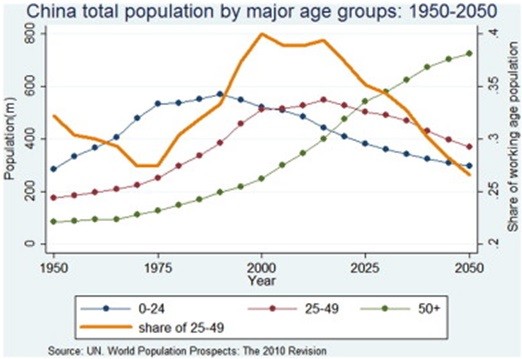
Figure 1: (Zhi, Whalley and Zhao, 2014)
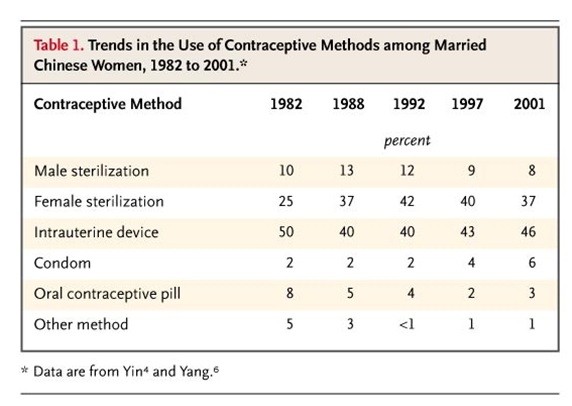
Figure 2: (Hesketh, Lu, and Xing, 2005)
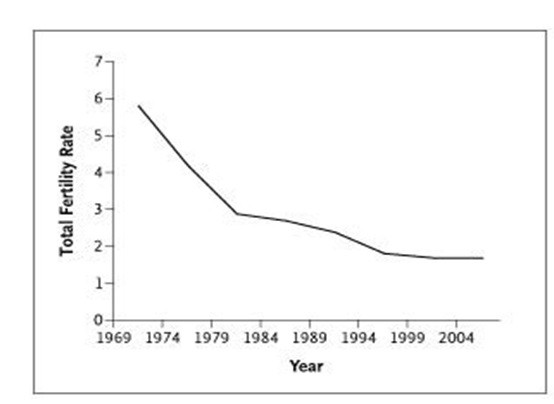
Figure 3: (Hesketh, Lu, and Xing, 2005)
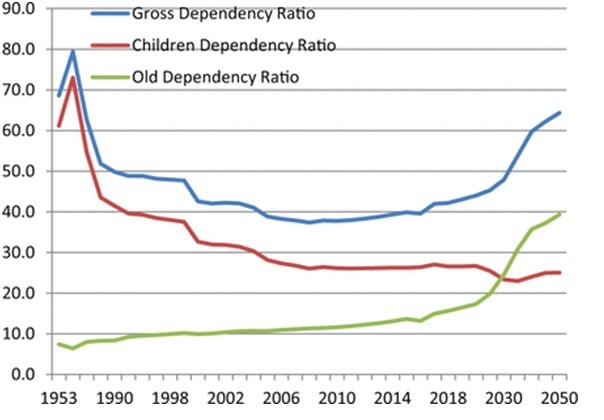
Figure 4: (Johansson and Cheng, 2014)
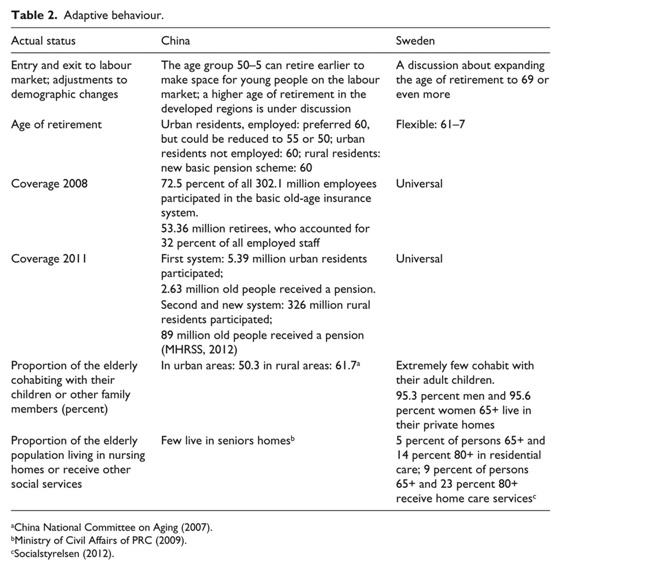
Figure 5: (Johansson and Cheng, 2014)
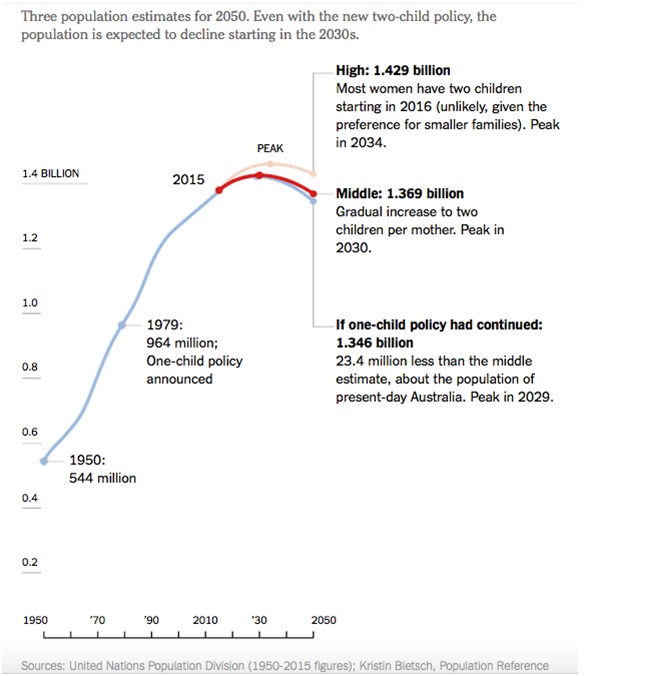
Figure 6: (Buckley, 2015)
Sources:
1. Hesketh, T., Lu, L., & Xing, Z. (2005, September 15). The Effect of China’s One-Child Family Policy after 25 Years — NEJM. Retrieved October 23, 2015, from http://www.nejm.org/doi/full/10.1056/NEJMhpr051833
2. Zhang, Y., & Goza, F. (2006, April 1). Who will care for the elderly in China?: A review of the problems caused by China’s one-child policy and their potential solutions. Retrieved October 23, 2015, from http://www.sciencedirect.com/science/article/pii/S0890406505000873
3. Fang, Q., & Leong, C. (2014, July 10). Impact of Population Growth and One Child Policy on Economic Growth of China. Retrieved October 23, 2015, from http://papers.ssrn.com/sol3/papers.cfm?abstract_id=2464426
4. Jian, M. (2013, May 21). China’s Brutal One-Child Policy. Retrieved October 23, 2015, from http://tony-silva.com/eslefl/miscstudent/downloadpagearticles/chinaonechild-nyt.pdf
5. Zhi, X., Whalley, J., & Zhao, X. (2014). Intergenerational transfer, human capital and long-term growth in China under the one child policy ☆. Retrieved November 10, 2015, from http://www.sciencedirect.com/science/article/pii/S0264999314001503
6. Hvistendahl, M. (2015). China’s New Birth Rule Can’t Restore Missing Women and Fix a Population. Retrieved November 10, 2015, from http://www.scientificamerican.com/article/china-s-new-birth-rule-can-t-restore-missing-women-and-fix-a-population/
7. Lee, J. (2015). China needs more than change in one-child policy. Retrieved November 10, 2015, from http://asia.nikkei.com/Viewpoints/Perspectives/China-needs-more-than-change-in-one-child-policy?page=1
8. Ng, R. (2015). The One Child Policy: The Impacts On The Future Of The People’s Republic Of China. Retrieved November 10, 2015, from http://works.bepress.com/cgi/viewcontent.cgi?article=1001&context=rachel_ng
9. Gietel-Basten, S. (2015). Why Scrapping The One-Child Policy Will Do Little To Change China’s Population. Retrieved November 10, 2015, from http://www.gizmodo.com.au/2015/10/why-scrapping-theone-child-policy-will-do-little-to-change-chinas-population/
10. Zeng, Y., Land, K., Gu, D., & Wang, Z. (2013). A Simple Method for Projecting Pension Deficit Rates and an Illustrative Application. Retrieved November 10, 2015, from http://link.springer.com/chapter/10.1007/978-90-481-8906-9_7#page-2
11. Johansson, S., & Cheng, S. (2014). Universal old-age pension in an aging China: Can China learn from Sweden? Retrieved November 10, 2015, from http://isw.sagepub.com/content/early/2014/07/24/0020872814531307.full
12. Luo, B. (2015). China Will Get Rich Before It Grows Old. Retrieved November 10, 2015, from https://www.foreignaffairs.com/articles/china/2015-04-20/china-will-get-rich-it-grows-old
13. Buckley, C. (2015, October 29). China Ends One-Child Policy, Allowing Families Two Children. Retrieved November 10, 2015, from http://www.nytimes.com/2015/10/30/world/asia/china-end-one-child-policy.html?_r=0
14. Peng, X (2011) ” China’s Demographic History and Future Challenges”, Science, v.333, 29 July 2011:581-587.[CP: 581-587]
15. Tien, Y. (1980). How China Meets Its Population Problem. Retrieved November 10, 2015, from http://www.jstor.org/stable/2947873?seq=1#page_scan_tab_contents
16. Cai, Y., & Cheng, Y. (2014). Pension Reform in China: Challenges and Opportunities. Retrieved November 10, 2015, from http://onlinelibrary.wiley.com/doi/10.1111/joes.12082/pdf
17. Beech, H. (2013). China Loosens Its One-Child Policy. Retrieved November 10, 2015, from http://world.time.com/2013/11/15/china-loosens-its-one-child-policy/
Erman Erzurumluoglu was born in 1995 in Istanbul and he is studying in McGill University for a BA degree in Finance and a minor in economics. He completed his high school education in Koc Foundation High School and received his diploma in 2013. After that he migrated to Canada and started his university studies in Montreal. He currently works as a Teacher Assistant in the Deasutels Faculty of Management’s Finance department.

